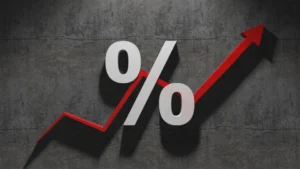Table of contents
ToggleIntroduction
Apple, Microsoft, LVMH… they all have one thing in common: they are massively buying back their own shares. But what lies behind this increasingly widespread mechanism used by global giants?
Behind this seemingly simple process — a company buying back its own shares on the market — are major financial, strategic, and ethical stakes. Widely used by corporate giants, share buybacks can signal confidence to the market, artificially boost certain financial indicators like earnings per share (EPS), or strengthen the position of existing shareholders. But at what cost? Some economists criticize this short-term logic that prioritizes shareholder returns over investment, innovation, or employee interests.
So, are share buybacks a legitimate value-creation tool or a symptom of capitalism focused solely on stock market performance? This article aims to explore the many facets of this practice, examining its advantages, risks, and controversies.
1. Understanding Share Buybacks: Mechanisms and Motivations
A. Definition and How Share Buybacks Work
A share buyback refers to the process by which a publicly listed company repurchases its own shares on the financial markets. These shares can then be canceled (reducing the company’s capital) or held as treasury stock (for example, to be redistributed later through stock option plans).
In practice, the company operates in the stock market to buy its shares, often via a program authorized by shareholders and regulated by specific market rules. It can also launch a tender offer at a premium price above the current market rate.
B. Strategic and Financial Motivations
Companies may choose to repurchase shares for several reasons:
Using Excess Cash: When investment opportunities are limited or deemed insufficiently profitable, companies may prefer to return surplus cash to shareholders via dividends or buybacks.
Improving Financial Ratios: Reducing the number of outstanding shares mechanically increases earnings per share (EPS), a key metric used by analysts and investors to assess profitability.
Stabilizing or Supporting the Share Price: In times of high volatility or unjustified price declines, a company may intervene to signal confidence to the market.
C. A Growing Phenomenon Since the 2000s
Since the early 2000s, share buybacks have skyrocketed, particularly in the United States. In 2023, S&P 500 companies spent nearly $925 billion on buybacks — a historic record. This trend intensified after the 2008 financial crisis and continued during the COVID-19 pandemic, when many cash-rich companies favored buybacks over investments or wage increases.
In Europe, although buybacks are somewhat less systematic, the practice is also becoming more widespread, driven by an increasingly Anglo-Saxon influenced shareholder culture.
2. Share Buybacks as a Value Creation Tool
A. A Positive Signal for Investors
When a company buys back its own shares, it often sends a signal of confidence to financial markets. The implicit message: “Our shares are undervalued, and we believe in our future.” This signal can reignite investor optimism and help boost the stock price.
Additionally, reducing the number of shares in circulation mechanically increases EPS. Even if net earnings remain stable, per-share profitability improves, potentially enhancing the company’s market valuation. This effect is closely monitored, as many institutional investors base their decisions on EPS trends.
B. Optimizing Capital Structure
Share buybacks can also be viewed as a tool for capital optimization. By reducing equity, they can lower the company’s weighted average cost of capital (WACC), making future investment projects more attractive.
It also represents an arbitrage between dividends and buybacks: the latter are often better perceived by markets because they offer greater flexibility. Unlike dividends, which create an expectation of regularity over time, buybacks can be occasional or adjusted based on market conditions.
C. Aligning Interests with Shareholders
In many publicly listed companies, a significant portion of executive compensation is tied to stock performance, particularly through stock options or free shares. Buybacks help support the share price and increase the value of shares held by management.
This creates an alignment of interests between executives and short-term shareholders. However, this dynamic can also lead to opportunistic behaviors — a concern we will address in the next section.
3. Share Buybacks: Excesses and Controversies
A. A Form of Market Manipulation?
While buybacks may appear as a sound capital management strategy, some see them as a disguised form of market manipulation. By artificially reducing the number of outstanding shares, a company can show EPS growth… without any real improvement in operational performance.
This technique is sometimes used to meet financial targets linked to executive compensation, raising questions about the sincerity of published financial statements. Moreover, when executed solely with stock market objectives in mind, buybacks can artificially inflate share prices, distorting perceptions of a company’s health.
B. Prioritizing Shareholders at the Expense of Investment
One of the most frequent criticisms is the promotion of short-termism: instead of investing in innovation, research, talent, or the energy transition, some companies choose to allocate their cash to buybacks.
This choice can hinder long-term growth and limit companies’ adaptability in a rapidly changing world. In this sense, buybacks may reflect a strategic inability to generate new growth drivers.
In a context of low productivity and rising inequalities, this prioritization of shareholder returns is increasingly challenged by economists, trade unions, and socially responsible investors.
C. Regulatory Oversight and Ethical Debates
In response to these potential excesses, several countries have sought to better regulate share buybacks. In the United States, the SEC imposes transparency rules, and the Biden administration introduced a 1% buyback tax under the Inflation Reduction Act. In Europe, regulations are less stringent, but calls for stricter controls are growing, especially within the European Commission.
On an ethical level, a fundamental question remains: to what extent should companies be accountable to all their stakeholders, and not just shareholders? Share buybacks epitomize this tension between financial profitability and social responsibility.
Conclusion
Share buybacks, once seen as a simple financial management tool, now crystallize a much broader debate on the role and responsibility of companies in the economy. Between creating value for shareholders and the risk of speculative excesses, they embody the complexity of strategic choices in the age of financial capitalism.
While they can be relevant in certain contexts — excess cash, undervalued stock, capital structure optimization — their widespread use raises concerns, especially when these practices replace long-term investments or primarily serve top management interests.
At a time when sustainable finance, transparency, and social responsibility are gaining prominence, it is essential to rethink the framework and incentives surrounding share buybacks. Ultimately, the real question is not whether buybacks are inherently good or bad, but rather what underlying logic they follow: that of balanced development, or that of superficial performance.





